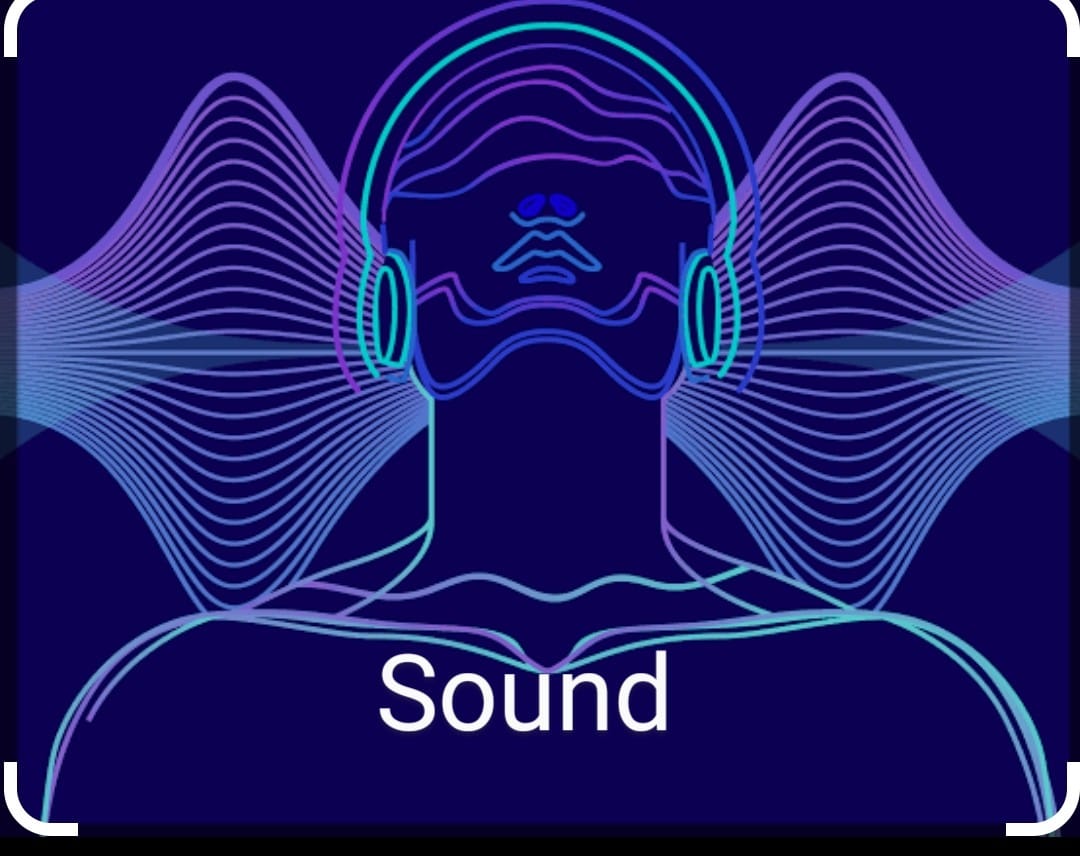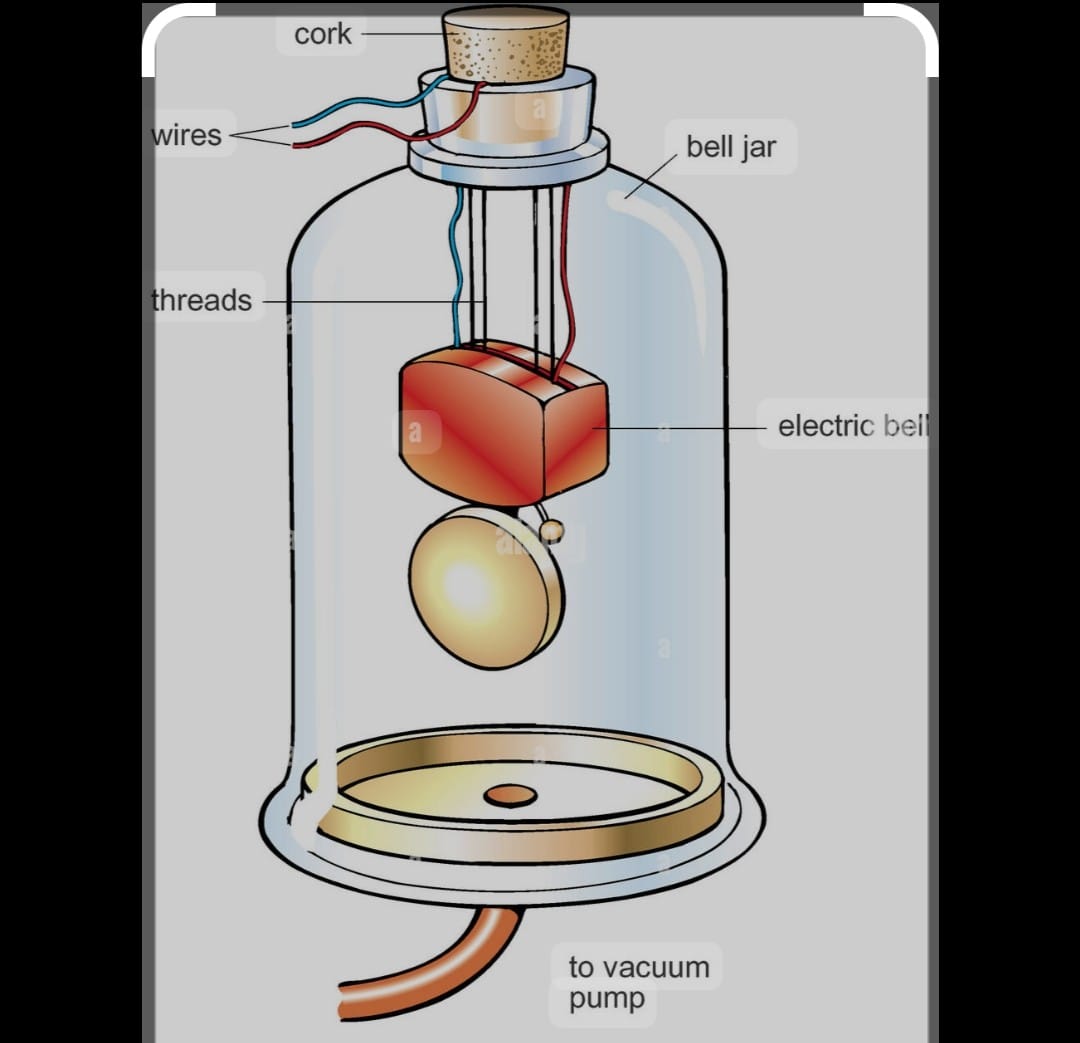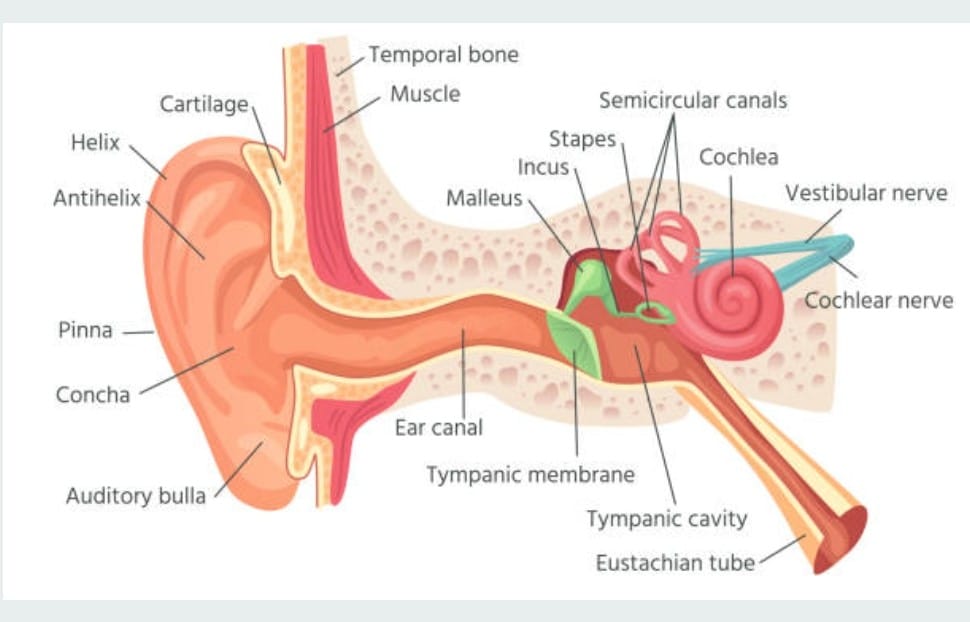SOUND
Sound the Chapter of Science , Physics that covers the syllabus of class 9 with basic idea of sound giving the idea of types of waves, sound wave, technical terms of sound.

Sound is the form of energy which produces the sensation of hearing and it felt by ears and law of conservation of energy is also applicable to it and it travels in form of waves .
PROPERTIES OF SOUND :
Sound is produced when object vibrate, it is produced by vibrating objects .
The energy required to make an object vibrate and produce sound is provided by some outside source such as clapping, sound of our voice is produce by vibration of vocal chord in our throat or sound produced by beating drum/ tabla due to vibration of membrane .
In Laboratory the experiment sound is produced by vibrating tunning fork. The vibrations of tunning fork can touch a small pith ball / cork ball with the prong of the sounding tunning fork the pith ball is pushed away with great force
Sound can also be produced by vibrating strings of sitar /by vibrating air through flute/by vibrating the membrane of tabla or drum/ by vibrating the plates of bicycle bells/ by friction between to objects/by scratching or scrubbing the two objects.
PROPOGATION OF SOUND WAVES :
Sound require medium of propagation which may be solid ,liquid or gas. When an object vibrates than the air particles around it vibrate exactly in same manner and displace from their stable position.
These vibrating particles exert the force on the near by particles so that they also begin to vibrate, this process continued in the medium till the produced sound reaches to our ears ,the disturbance produced by sound travels through the medium but particles do not leave their position they transport the energy only
Wave is a kind of disturbances which travel through medium and transport the energy so sound travels in form of waves so they are called mechanical waves.
SOUND WAVES ARE LONGITUDINAL WAVES :
when a body vibrates then it compresses the air surrounding it and form the aera of high density called compression (C). It is the part of wave in which particle of medium are closer to one another forming the high pressure.
This compression moves away from the vibrating body when the vibrating body moves back as the aera of low pressure is created which is called rarefaction (R) it is the area of the wave particles of the medium are further apart from one another forming low pressure and low density area.
When body vibrates back and forth a series of compression and rarefaction are formed in air resulting the movement of sound waves .
vibrating body C—-R—–C——R—–C—–R——C ( sound wave motion)
SOUND NEEDS MEDIUM FORPROPOGATION :
We know that sound waves are mechanical wave , needs medium for it’s propagation it cannot travel in vaccum In an experiment an electric bell is suspended in air tight bell jar connected with vaccum pump when bell is full of air we can hear the sound of bell and air is pumped out of the jar by vaccum pump no sound can be heard so medium is needed for the propagation of sound waves. ( fig from bk)
We cannot hear sound directly on moon as there is no atmosphere on moon for the propagation of sound the astronauts use wireless for conversation at moon .
SOUND WAVES ARE LONGITUDINAL WAVES:
A wave in which the particles of the medium vibrates back and forth in the same direction in which the wave is moving is called longitudinal waves When we push and pull the slinky compression when number of turns are more closer and rarefaction when number of turns are farther .
when the waves travel along the slinky spring it’s each turn moves back and forth by only a small distance in the direction of wave ,so the wave is longitudinal. The direction of vibrations of the particles is parallel to the direction of wave.
TRANSVERSE WAVES :
When the particles of the medium vibrates perpendicular to the propagation of waves . When one end of slinky is moved up and down rapidly whose one end is made fix. The upper end is called crest and the down end is called trough Light wave travels is transverse waves and do not require any medium or can travel in vacuum
CHARACTERISTICS OF SOUND WAVES ;
The main characteristics of sound waves are wave length (λ) ,frequency (n) amplitude (A) Time period (T) and velocity (v)
when wave travels in air the density and pressure of changes from the mean position, compression /crest with high density and high pressure and rarefaction/trough with low density and pressure takes place.
WAVE LENGTH :
Itis the distance between the two consecutive compression or rarefaction in longitudinal waves or distance between two consecutive crest or trough in transverse wave It is represented by lamda (Greek word ) SI unit metre
AMPLITUDE :
The maximum displacement of the particle from it’s mean position of the vibrating particle is called displacement . SI unit metre .
FREQUENCY :
Number of complete waves produced in one second or number of vibrations per second is called frequency (n) frequeny = no. of vibrations taken in one second SI unit Hertz . 1 Hertz means one vibration taken in one second
TIME PERIOD :
Time taken to complete one complete vibration by the vibrating body is called time period
T= 1/ frequency =1/n SI unit second
VELOCITY : It is the speed with which wave travel in the medium
velocity of wave = wave length / time period
v= λ/T
as n= 1/T
V=λxn
Velocity = wave length x frequency
PITCH :
The pitch of sound depends on the frequency of sound/vibration. It is directly proportional to frequency. Greater the frequency higher the pitch and lesser the frequency lesser the pitch .
The voice of women is shrill which has high pitch due to shorter vocal chords so it vibrate more frequently and produce higher pitch where as the voice of man has harsh voice due to larger vocal chords that vibrate with lower frequency and have low pitch.
High pitch sound has large number of compressions and rarefaction passing fix point per unit time.
LOUDNESS :
It depends upon the amplitude of the sound wave ,it is measured of the sound energy reaching the ear per second , greater the amplitude of sound wave, greater is the energy louder the sound, shorter the amplitude lesser the energy soft is the sound. SI unit decibel.
Loudness ∝ (amplitude)²
that is if amplitude increase two time than loudness increase four times .
QUALITY / TIMBRE :
The timbre of sound depends on the shape of the sound wave produced by it . It is the characteristic of musical sound. It helps to distinguish between two sounds of same pitch and loudness .
Sound of single/same frequency is called tone . and mixture of different frequency is called note
NOISE ;
It is unpleasant sound to hear whereas MUSIC is a pleasant sound to hear and of good quality.
SOUND IN VARIOUS MEDIUM :
Speed of sound depends on the nature of the material through which it travels. It is least in gas , intermediate in liquid and highest in solid .
The speed of sound increases with increase in temperature , with increase in humidity in air speed of sound is 332 m/s
Speed of light is faster than sound that is why lighting is seen before the thunders of clouds.
SONIC BOOM:
Some aircrafts bullets rockets etc have supersonic speed it refers to the speed of an object which is greater than the speed of sound and produces extremely loud sound waves which is called shock waves in air .
Sonic boom is an explosive noise caused by shock waves which produce tremendous sound energy which can shatter the glass panes of windows
REFLECTION OF SOUND :
Sound waves also bounces back when it falls on the hard surface this is known as reflection of sound. Laws of reflection of light is obeyed by sound (fig book )
i) The incident of sound wave, the reflection of sound wave and normal lie at the point of incident wave on same plane ii) the angle of incident sound wave is equal to the angle of reflection of sound wave .
REFLECTION OF SOUND (ECHO)
It is the repetition of sound caused by reflection of sound wave is echo
We can hear echo when there is time gap of 0.1 second in original sound and echo .Itis produced when sound is reflected back from hard surface as soft surface absorb the sound waves
To calculate minimum distance for echo is 17.2 meters
distance = (velocity of sound x time to receive the echo) ÷ 2
Rolling of thunder is due to multiple reflection of sound of thunder from the number of reflecting surfaces such as clouds and earth .
REVERBERATION :
It is the persistence of sound in a big hall due to repeated or multiple reflection of sound from the walls, ceiling and floor of the hall is called reverberation .If the distance is too long sound becomes blurred, distorted and confusing .
HOW REVERBATION BE REDUCED :
Panels made of compressed fibre board are put on the walls and ceiling to absorb the sound. Heavy curtain are put on doors or windows , carpets on the floor.
APPLICATION OF REFLECTION OF SOUND:
i) Megaphone, loudspeakers , bulb horn , trumpets, shehnai are made in way to send sound in one particular direction without spreading around. All these have funnel tube which reflets sound waves repeatedly towards the listeners.
ii) Stethoscope : It is the instrument used by doctors for listening the sound produced in human body mainly by heart and lungs by means of multiple reflection .
iii) Sound Board : In big halls / auditoriums sound is absorbed by walls/ ceiling/ seats so a curved sound boards are placed behind the speakers so that the speech can be heard easily the board works on multiple reflection of sound on the other hand ceiling ae also made curved for this purpose .
RANGE OF HEARING :
For human being it is 20 Hz — 20000Hz, child below 5 years and dog can hear up to 25KHz
The sound below 20Hz is infrasonic sound Rhinoceroses can communicate at 5Hz Elephant and whales are also hear infrasonic waves , earthquakes produces infrasonic waves before eruption that is why animals living underground leave the their houses
The sound with the frequency above 20 kHz are called ultrasonic sounds.
HEARING AID :
It is an electronic device used by person who are hard of hearing Microphone convert sound into electrical signals than those are amplitude by amplifier. The amplified signals sent to speaker of hearing aid and speaker convert the amplified signals to sound and send to the ear for clear hearing .
APPLICATION OF ULTRASOUND :
It is used to detect the cracks in metal blocks in industry without damaging it . It is used in cleaning the aera which is hard to reach /odd shape difficult to clean It is used to investigate the internal organ of human body such as liver/ gall bladder/ uterus etc It is also used in echo cardiography and ultra sonography .
SONAR ;
It is sound navigation and ranging device which is used to find distance , direction and speed of underwater objects. It consist of transmitter and receptor which is installed at the bottom of ship ,
The transmitter produces and transmit ultrasonic waves and these waves travel through water and after striking the object at the bottom is reflected back and received by detector .
The reflected waves are converted into electrical signals by the detector the sonar measures the time taken by ultra sound waves to travel from bottom of sea and back to ship
distance of the object at the bottom of sea =( velocity x time )÷ 2
APPLICATION :
Bats fly in the dark night by emitting high pitched ultrasound waves which are reflected from the obstacles/prey and returned to bat ear the nature of reflection tells the bat where the obstacles or prey is what it is like this is called bio sonar .
STRUCTURE OF EAR :

Ear consist of three parts outer ear, middle ear and inner ear . The ear are the sense organs which help in hearing sound the outer ear is called pinna It collects the sound and passes the auditory canal at the end of auditory canal is a thin elastic membrane which is called ear drum/ tympanic membrane. ( fig from bk )
The middle ear contains three bones hammer, anvil and stir up linked with one another free end of hammer touches ear drum and that of stirup linked with membrane of oval window of inner ear .The lower part of the middle ear has narrow Eustachian tube
The inner ear is coiled tube called cochlea which is connected with oval window which is filled with liquid containing nerve cell connected to brain
WORKING of human ear :
first sound waves reaches to Pinna than to ear canal which makes the ear drum vibrates it goes to hammer than to anvil after that to stirrup which final goes to oval window than to cochlea than to auditory nerve finally goes to brain which interprets the electrical signals as sound and we get the sensation of hearing.
Read More : Work and Energy
Read More : Gravitation
Read More: Force and Law of Motion
Follows us on : Facebook
Follow us on : Instagram